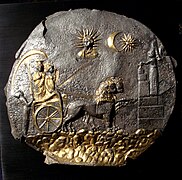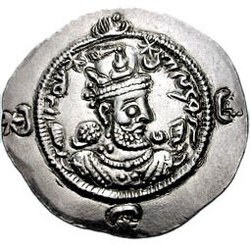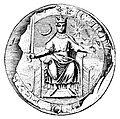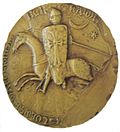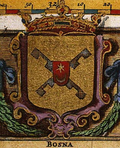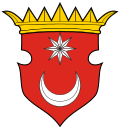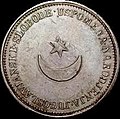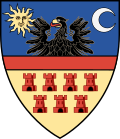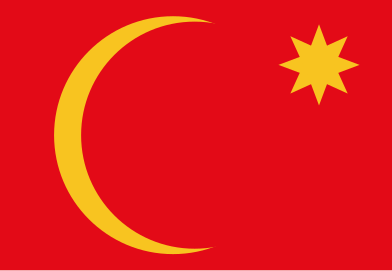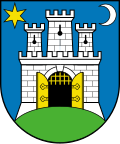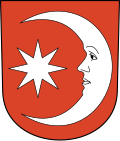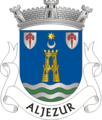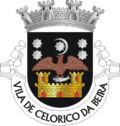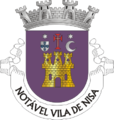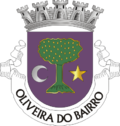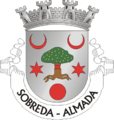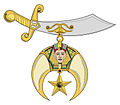The conjoined representation of a crescent and a star is used in various historical contexts, including as a prominent symbol of the Ottoman Empire, and in contemporary times, as a national symbol by some countries, and by some Muslims as a symbol of Islam, [1] while other Muslims reject it as an Islamic symbol. [2] It was developed in the Greek colony of Byzantium ca. 300 BC, though it became more widely used as the royal emblem of Pontic king Mithridates VI Eupator after he incorporated Byzantium into his kingdom for a short period. [3] During the 5th century, it was present in coins minted by the Persian Sassanian Empire; the symbol was represented in the coins minted across the empire throughout the Middle East for more than 400 years from the 3rd century until the fall of the Sassanians after the Muslim conquest of Persia in the 7th century. [4] The conquering Muslim rulers kept the symbol in their coinage during the early years of the caliphate, as the coins were exact replicas of the Sassanian coins.
Contents
- History
- Origins and predecessors
- Classical antiquity
- Medieval and early modern
- Contemporary use
- National flags
- Symbol of Islam
- Municipal coats of arms
- Diocesan Coat of Arms
- Sports Club Emblems
- Other uses
- See also
- References
- External links
Both elements of the symbol have a long history in the iconography of the Ancient Near East as representing either the Sun and Moon or the Moon and Venus (Morning Star) (or their divine personifications). It has been suggested that the crescent actually represents Venus, [5] [6] or the Sun during an eclipse. [7] Coins with crescent and star symbols represented separately have a longer history, with possible ties to older Mesopotamian iconography. The star, or Sun, is often shown within the arc of the crescent (also called star in crescent, or star within crescent, for disambiguation of depictions of a star and a crescent side by side). [8] In numismatics in particular, the term crescent and pellet is used in cases where the star is simplified to a single dot. [9]
The combination is found comparatively rarely in late medieval and early modern heraldry. It rose to prominence with its adoption as the flag and national symbol of the Ottoman Empire and some of its administrative divisions (eyalets and vilayets) and later in the 19th-century Westernizing tanzimat (reforms). The Ottoman flag of 1844, with a white ay-yıldız (Turkish for "crescent-star") on a red background, continues in use as the flag of the Republic of Turkey, with minor modifications. Other states formerly part of the Ottoman Empire also used the symbol, including Libya (1951–1969 and after 2011), Tunisia (1831) and Algeria (1958). The same symbol was used in other national flags introduced during the 20th century, including the flags of Kazakhstan (1917), Azerbaijan (1918), Pakistan (1947), Malaysia (1948), Singapore (1959), Mauritania (1959), Azad Kashmir (1974), Uzbekistan (1991), Turkmenistan (1991) and Comoros (2001). In the latter 20th century, the star and crescent have acquired a popular interpretation as a "symbol of Islam", [1] occasionally embraced by Arab nationalism or Islamism in the 1970s to 1980s but often rejected as erroneous or unfounded by Muslim commentators in more recent times. [2] Unlike the cross, which is a symbol of Jesus' crucifixion in Christianity, there is no solid link that connects the star and crescent symbol with the concept of Islam. The connotation is widely believed to have come from the flag of the Ottoman Empire, whose prestige as an Islamic empire and caliphate led to the adoption of its state emblem as a symbol of Islam by association.
Unicode introduced a "crescent and star" character in its Miscellaneous Symbols block, at U+262A (☪).







